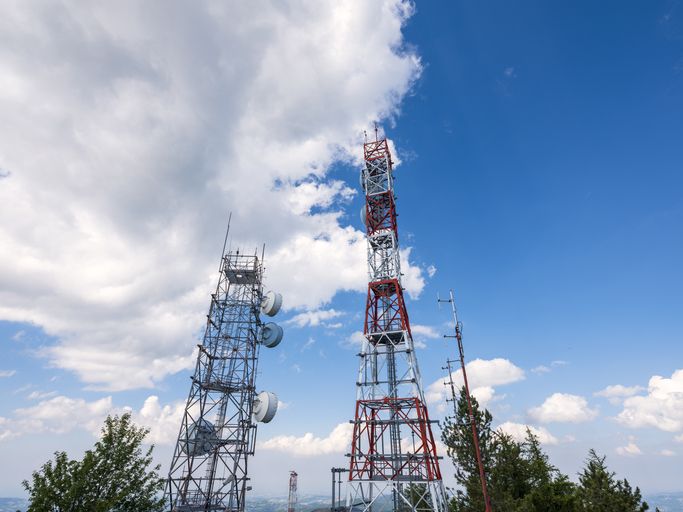You probably heard the buzz about 5G wireless broadband cell towers interfering with aircraft radar altimeter systems (also called radio altimeters). And now there are two FAA Airworthiness Directives (AD 2021-23-12 and 2021-23-13) in place. The latter is focused on helicopter operations. In part, the ADs say that radio altimeters are unreliable if they experience interference from wireless broadband operations in the 3.7-3.98 GHz (5G C-band) frequency spectrum.
Aside from lots of people wondering why aircraft navigation systems weren’t considered during the 5G broadband design process, the AD has created a lot of confusion, especially among pilots who fly with radar altimeters in some lower-end GA aircraft.
We’re talking about the vintage King KRA10A, ARC/Sperry models and even Garmin’s current GRA 55—many of which are used as belt-and-suspender backstop on instrument approaches. Some of these systems are interfaced with retrofit avionics, including Garmin, and display radar altimeter DH (decision height) while monitoring an approach. Old tech, yes, but useful tech just the same.
BACKGROUND
Before the ADs, the FAA published a Special Airworthiness Information Bulletin (AIR-21018) that covered the risk of potential adverse effects on radio altimeter systems. Specifically, the SAIB was to inform aircraft manufacturers, radio altimeter manufacturers, operators and pilots of the planned deployment of wireless broadband networks. Commercial aviation radio altimeters operate in the 4.2-4.4 GHz band, which is separated by 220 megahertz from the C-Band telecommunication systems in the 3.7-3.98 GHz band.
Currently, the FAA’s approval process for radar altimeters is based on FAA TSO-C87A, Airborne Low-Range Radio Altimeter. TSO-C87A does not provide criteria for compatibility with adjacent band operations, including potential impacts associated with wireless communications system deployments. The RTCA formed a task force to assess the interference impact of wireless broadband operations in the 3700-3980 MHz band on radio altimeters.
As most ADs in the making do, the situation snowballed after the FAA requested that radio altimeter manufacturers submit receiver RF selectivity, interference tolerance masks and baseline operational specifications for each model number in production (or still in use), and the approximate numbers of each radio altimeter model currently in service in the United States. There were also tests for susceptibility to interference from fundamental emissions in 3700-3980 MHz. Take a guess at the outcome, which prompted the eventual ADs.
REAL-WORLD OPS
In a nutshell, when operating in U.S. airspace, the AD prescribes that some operations (approach related) requiring radio altimeters are prohibited in the presence of 5G C-Band wireless broadband interference, as identified by NOTAMs (NOTAMs will be issued to state the specific airports where the radio altimeter is unreliable due to the presence of 5G C-Band wireless broadband interference).
Compliance is pretty easy: For those aircraft that are subject to the AD, the FAA basically requires the operator to add specific restrictions to the aircraft’s flight manual.
As written, the AD is quite broad because it requires the limitations to be included in the AFM, even if the aircraft isn’t capable/authorized of performing any of the following restricted operations.
• Instrument Landing System (ILS) Instrument Approach Procedures (IAP) SA CAT I, SA CAT II, CAT II and CAT III approaches.
• Required Navigation Performance (RNP) Procedures with Authorization Required (AR), RNP AR IAP.
• Automatic Landing operations.
• Manual Flight Control Guidance System operations to landing/head-up display (HUD) to touchdown operation.
• Use of Enhanced Flight Vision System (EFVS) to touchdown under 14 CFR 91.176(a).
There’s a pretty good chance that most typical GA aircraft (including many light jets) aren’t involved with these procedures even if they do have a radar altimeter installed, as plenty are equipped. But if you are a radar altimeter user who backstops instrument approaches with it, our advice is to pay attention to the NOTAMs.
Some have even speculated that the AD could be expanded to include all aircraft with radar altimeters, but that hasn’t happened yet.
TIGHTER SPECS
The 5G issue has already prompted some manufacturers to refresh the circuitry in their radar altimeters. Texas-based FreeFlight Systems has introduced the Terrain Series radar altimeters, which have upgraded RF circuitry to mitigate spurious 5G interference.
The FreeFlight model RA-5500 radar altimeter is designed for general aviation aircraft and is fully certified to the TSO-C87 specifications. There’s also the RA-6500 for helicopters and business jets.





